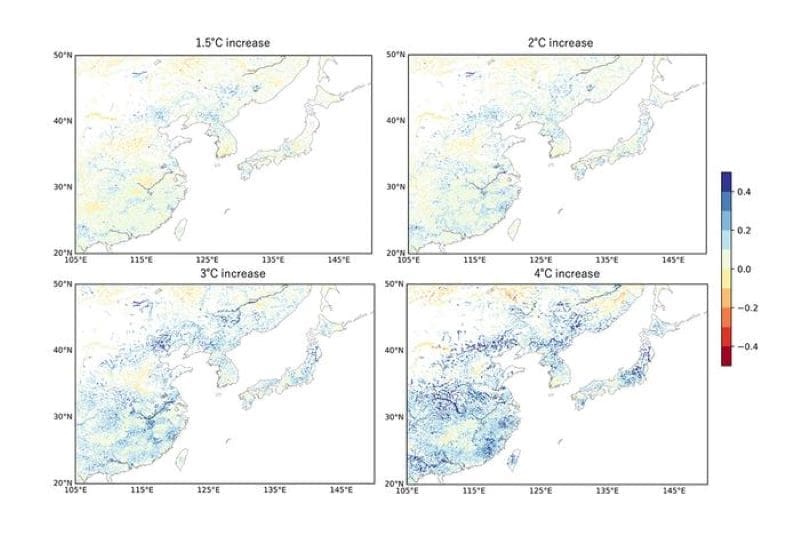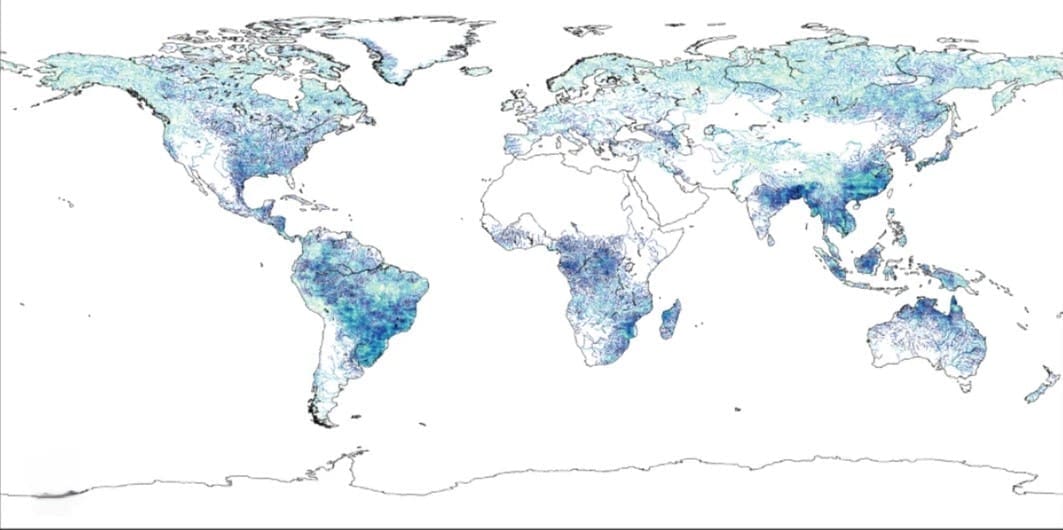Summary:
Flooding caused by extreme rainfall is one of the most pressing threats under climate change, yet predicting where and when these events will strike has long been complicated by the chaotic nature of the Earth’s climate system.
Researchers from the Institute of Industrial Science at The University of Tokyo have now developed a statistical approach that reduces uncertainty in flood risk projections across about 70% of the world’s land area. Their study, published in Scientific Reports, introduces a method that combines different socioeconomic pathways within climate scenarios to expand the effective sample size of global flood risk simulations.
By focusing on projections tied to specific levels of global warming – such as 2 °C or 3 °C above preindustrial levels – the team found that geographic patterns of flood risk remain broadly consistent across scenarios. This makes it possible to generate more reliable predictions without requiring vast numbers of costly, large-scale simulations.
The approach is particularly valuable for regions such as the Mississippi River basin in the United States and areas spanning China to Southeast Asia, where improved flood forecasts could significantly aid adaptation planning. The findings provide policymakers with clearer, more actionable information for preparing communities against intensifying climate-driven flood hazards.

Is flooding under climate change more predictable than we thought?
Is your city prepared for flooding caused by extreme rainfall under climate change? In many regions, the uncertainty surrounding this threat is a major cause for concern and an obstacle to adaptation. However, according to researchers from Japan, their new statistical method increases the accuracy of flood risk projections across about 70% of the Earth’s landmass.
The Earth’s climate is notoriously complex to model, with considerable uncertainty stemming from the internal variability of this chaotic system. Flood risks are particularly important to predict accurately, because human populations often gather around waterways. A key approach to improve future flood risk projection accuracy is to increase the sample size of the climate scenarios used for analysis, but the number of large-ensemble experiments available for these future projections remains limited.
In a new study, researchers from the Institute of Industrial Science, The University of Tokyo, developed a method to expand the statistical sample size of the available ensemble data by merging parts of future climate scenarios with the same level of warming but different socioeconomic pathways. These pathways account for various socioeconomic factors including economic growth, urbanization, and technological development.
“Previously, it was believed that flood risk changes would vary under different future socioeconomic scenarios,” explains study lead author Yuki Kimura. “However, under the same level of global warming, the geographic distribution of flood risks is actually broadly similar across socioeconomic pathways.”
This approach using large-scale simulations with a global flood model and climate projection data allowed the research team to more accurately evaluate future flood risks across much of the Earth’s land surface. These findings offer policymakers powerful new insights for adaptation and preparedness strategies, by separating out the unpredictable effects of real socioeconomic factors.
Specifically, the area around the Mississippi River, USA, and a region extending from China to Southeast Asia were identified as areas that particularly benefited from the increased accuracy of flood risk prediction achieved in this study.
According to study senior author Dai Yamazaki: “Using this method, we can now report flood risk information that is both reliable and practical, regardless of the socioeconomic scenario, based on specific warming levels such as 2 °C or 3 °C.” Basing projections on these warming levels, rather than time-based predictions, aligns well with the climate policy targets set by the Paris Agreement, further highlighting the practical value of this approach.
Considering warming levels independently from time may not be appropriate for all climate parameters – for example, particularly rapid warming could affect ecosystems in ways that differ markedly from more gradual scenarios at the same warming level. However, given its practical benefits for predicting flood risks, this method will likely become widely used in future to provide accurate, actionable information to prepare for climate change effects.
Journal Reference:
Kimura, Y., Hirabayashi, Y. & Yamazaki, D., ‘Reduction of the uncertainty of flood projection under a future climate by focusing on similarities among multiple SSP-RCP scenarios’, Scientific Reports 15, 31614 (2025). DOI: 10.1038/s41598-025-16327-4
Article Source:
Press Release/Material by Institute of Industrial Science | The University of Tokyo
Featured image: Spatial distribution of the standard deviation of the flood change ratio from the historical climate to 2.0 °C warming: Standard deviation among three different SSP-RCPs (cropped image Fig.4). Credit: Kimura et al. (2025) | Scientific Reports | CC BY




